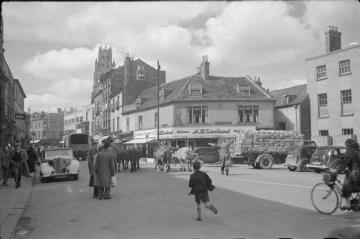In the run up to the EU referendum Boston in Lincolnshire became known as the 'most Eastern European' town in the UK.
Since 2001 the market town has seen a 15% increase in its population, and is now home to the highest proportion of Eastern European migrants in England and Wales.
The high numbers of migrants has resulted in cultural tensions surrounding language, pace of change and the impact it has had on services. However, a council commissioned report suggests limited impact on services pointing to the fact the town has the lowest amount of empty shops in the East Midlands.
Boston is a useful place based example of the impact of EU immigration on a UK region. Use it as an example in your classroom to help pupils:
- Consider the importance of scale when discussing migration and geography
- Discuss the impact of migration on social structure and impact on a place
- Analyse the uncertainty for EU migrants post-referendum and how this might affect a place

Kate Amis, Schools Liaison and Widening Participation Officer for the School of Geography at Queen Mary University of London, was inspired to suggest this teaching idea after hearing Dr Jonathan Darling's (University of Manchester) lecture on 'Migration and borders in times of crisis' at our New Teacher Subject Days course for Geography Teachers.
Schools Programme members and course attendees can download the resources from the event in the PTI Staffroom.
Want to discover more inspiring subject knowledge? See our upcoming courses and events for 2017, including our upcoming CPD Day Changing places: making geographical links at KS3-5 as well as our New Teacher Subject Days course for Geography teachers.
Find more knowledge nuggets here!
Image: Boston Market- the Country Market and May Fair, Boston, Lincolnshire, England, UK, 1945 via Wikimedia Commons licensed via Public Domain (https://commons.wikimedia.org/wiki/File:Boston_Market-_the_Country_Market_and_May_Fair,_Boston,_Lincolnshire,_England,_UK,_1945_D24678.jpg)
